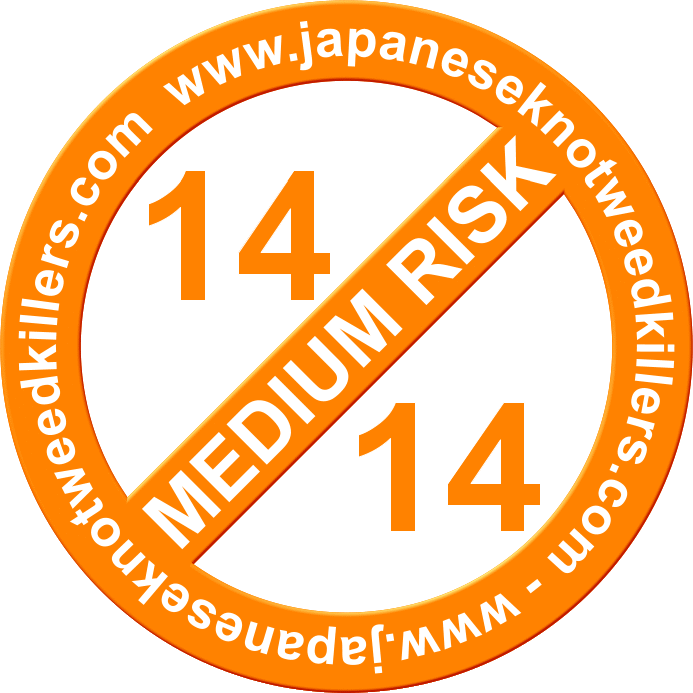

Ireland: Kerry - Dublin - Cork - Waterford - Roscommon - Galway - Belfast
UK: London - Manchester - Newcastle - Cardiff - Liverpool


Early Goldenrod
Invasive Species Information

What Is Early Goldenrod - (Solidago gigantea)?
Habitat: Terrestrial
Distribution in Ireland: Widespread
Status: Established
Family name: Asteraceae
Common name/s: Giant Goldenrod, Tall Goldenrod
Reproduction: Self-sterile and insect-pollinated. Sometimes spreading by means of underground rhizomes.

Early Goldenrod #1
In its native habitat, Early Goldenrod can occur in any crop, but is not a serious weed in annual crops since it can be controlled by tilling.
However, it invades poorly managed pasture, dry meadows, wetland edges, rail sides, roadsides and wasteland.
Early Goldenrod has a broad climate tolerance and can invade any uncultivated areas.

Early Goldenrod - (Solidago gigantea)
Early Goldenrod is a perennial herb that reaches heights of up to 2m tall, sometimes spreading by means of underground rhizomes. It often grows in clumps with no leaves at the base but numerous leaves on the stem. At the top, each stem produces a sizable array of many small flower heads, sometimes several hundred. Each head is yellow, containing both disc florets and ray florets.
In late summer it produces small yellow flowers in a flat cluster display at the top of a tall arching, leafy and smooth stem.
Early Goldenrod is highly invasive throughout Europe. In its non-native range, it exerts a negative impact on native communities by decreasing species diversity, due to its intense competitive effects and rapid growth.
In the non-native European range, several management options are applied, such as periodical flooding, mowing, mulching, grazing, or herbicide to reduce the negative impact of the species on native biodiversity
How To Identify Early Goldenrod?
%20ID%20Guide%20V4.png)
Early goldenrod - Solidago gigantea ID Guide
Leaf: Green
Flower: Small Yellow Flowers
Stem: Smooth

Early goldenrod #3

Early goldenrod #4
Why Is Early goldenrod A Problem?
Early Goldenrod is an invasive alien plant species (IAPS), meaning it out-competes crowds-out and displaces beneficial native plants that have been naturally growing in Ireland for centuries.
Herbicide is often used to reduce the negative impact of the species on native biodiversity.
European Communities (Birds and Natural Habitats) Regulations 2011 non-native invasive plant species A-Z (Updated 2017)
There are currently 35 invasive plant species listed in the European Communities (Birds and Natural Habitats) Regulations (annex 2, Part 1)...
Click on a species from the following list to find out more regarding non-native species subject to restrictions under Regulations 49 and 50.
-
American Skunk-Cabbage - Lysichiton americanus
-
Red Alga - Grateloupia doryphora
-
Wakame - Undaria pinnatifida
-
Waterweeds - Elodea (all species)
Additional Non-Native Plant Species identified as Medium Risk on Ireland's Biodiversity List...
Common name
Barberry
Brazilian waterweed
Butterfly-bush
Canadian-fleabane
Clover broomrape
False acacia
Garden lupin
Giant rhubarb
Hairy rocket
Himalayan honeysuckle
Himalayan knotweed
Holm oak
Pampas grass
Pitcherplant
Red oak
Rock cotoneaster
Salmonberry
Sycamore
Three-cornered garlic
Traveler's-joy
Species name
Lysichiton americanus
Antithamnionella ternifolia
Ribes nigrum
Egeria densa
Buddleja davidii
Conyza canadensis
Codium fragile ssp. tomentosoides
Pseudotsuga menziesii
Solidago gigantea
Gunnera manicata
Persicaria wallichii
Lonicera japonica
Euphorbia esula
Acaena ovalifolia
Matteuccia struthiopteris
Sarracenia purpurea
Bunias orientalis
Environment
Terrestrial
Terrestrial
Terrestrial
Marine
Terrestrial
Terrestrial
Freshwater
Terrestrial
Terrestrial
Terrestrial
Terrestrial
Marine
Terrestrial
Terrestrial
Terrestrial
Terrestrial
Terrestrial
Terrestrial
Terrestrial
Terrestrial
Terrestrial
Terrestrial
Terrestrial
Terrestrial
Terrestrial
Terrestrial
Freshwater
Terrestrial
Terrestrial
Terrestrial
Terrestrial
Terrestrial
Terrestrial
Marine
Terrestrial
Terrestrial
Terrestrial
Terrestrial
Terrestrial
Terrestrial
Terrestrial
Terrestrial
Terrestrial
Terrestrial
Terrestrial
Terrestrial
Freshwater
Terrestrial
Risk score
14
15
17
15
14
14
17
17
14
17
16
16
15
14
17
17
17
16
17
14
16
14
14
15
14
16
14
16
14
14
14
14
14
14
14
17
14
14
14
15
15
17
17
14
16
15
14
15